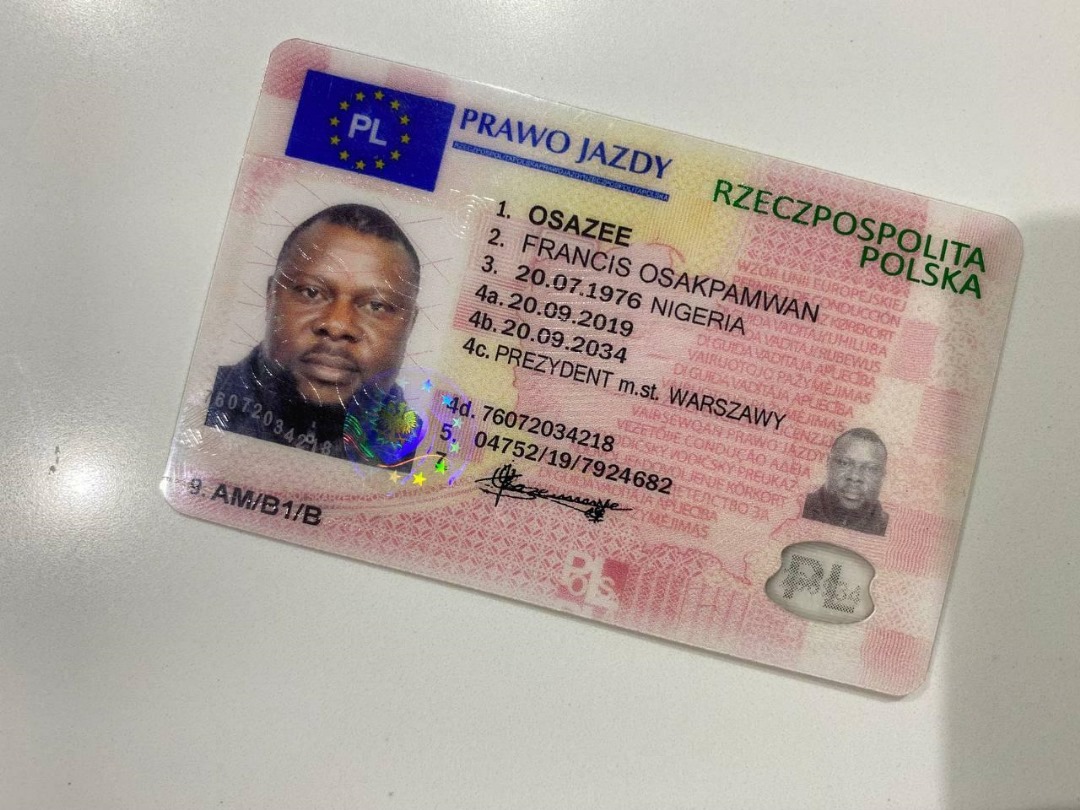10 Things That Everyone Is Misinformed Concerning Driving Licenses B
페이지 정보

본문
Understanding Driving Licenses: Types, Requirements, and Frequently Asked Questions
Driving is an essential element of contemporary life, and acquiring a driving license is a vital turning point for numerous people. This post checks out the different kinds of driving licenses available, the requirements to acquire them, and responses typically asked concerns associated with the subject. An educated viewpoint on driving licenses can assist people comprehend the value of picking the appropriate type of license to meet their requirements.

Kinds Of Driving Licenses
Driving licenses can differ between nations and areas, however they generally fall into a number of significant classifications. The following table sums up the most typical types of driving licenses, including their purposes and common restrictions.
| Type of License | Description | Typical Restrictions | Eligibility Age |
|---|---|---|---|
| Student's Permit | Enables beginner chauffeurs to practice. | Need to drive with a certified grownup. | 16-18 years of ages |
| Class C License | Standard license for guest vehicles. | No restriction on number of guests. | 18 years or older |
| Class A License | Commercial license for large automobiles. | Should follow stricter guidelines. | 21 years or older |
| Class B License | For driving buses and bigger vehicles. | May require unique recommendations. | 21 years or older |
| Motorbike License | For operating motorcycles. | Should use a helmet; varies by state. | 16-18 years old |
| International License | Permits legal driving in foreign countries. | Must possess a legitimate domestic license. | 18 years or older |
Learner's Permit
The student's permit is the first action for numerous people venturing into the world of driving. This permit allows amateur chauffeurs to practice driving under supervised conditions, normally requiring a certified grownup over a particular age to accompany them in the lorry.
Class C License
The Class C license is the most frequently held driving license, allowing individuals to operate basic traveler lorries. This license generally has fewer restrictions compared to other classifications.
Class A and B Licenses
Class A and B licenses are required for operating industrial cars. These licenses need special training and screening, making sure that drivers are geared up with the abilities required for maneuvering bigger and more complicated vehicles safely.
Motorcycle License
People interested in riding motorbikes need to acquire a motorcycle license, which can need extra training and testing. Safety gear, such as helmets, is typically mandated by law.
International License
An international driving license makes it possible for individuals to drive in foreign nations, but it is vital to have a legitimate domestic driving license in combination with the international permit.
Requirements to Obtain a Driving License
The requirements for acquiring a driving license can differ considerably by jurisdiction. Nevertheless, there prevail actions and requirements that a lot of candidates will encounter. Below is a list of basic requirements:
Age Requirement:
- Minimum age differs; student's authorizations are frequently provided at 16, while full licenses may require candidates to be 18 or older.
Vision Test:
- Most jurisdictions need candidates to pass a vision test to guarantee safe driving abilities.
Written Test:
- New chauffeurs need to pass a composed exam that covers traffic laws, road signs, and safe driving practices.
Driving Test:
- Practical driving tests are performed to show an applicant's capability to run a lorry safely under various conditions.
Costs:
- Payment of application and screening charges is usually required.
Proof of Identity:
- Applicants need to provide legitimate recognition, such as a passport or birth certificate, in addition to evidence of residency.
Parental Consent (for minors):
- Parental or guardian consent is typically required for applicants under the age of 18.
Comprehending the various types of driving licenses and their involved requirements is crucial for anybody seeking to drive legally and securely. Each license serves a distinct purpose, dealing with numerous driving needs, from standard vehicles to industrial transportation and motorcycles. By meeting the required criteria and adhering to guidelines, aiming motorists can enjoy the flexibility of driving while guaranteeing their security and the security of others.
Regularly Asked Questions (FAQs)
What do I need to bring when obtaining a driving license?
- You normally require to supply recognition, evidence of residency, and any needed application fees. Talk to your regional DMV or licensing authority for particular requirements.
The length of time does it take to obtain a driving license?
- The timeline can vary based upon specific situations, such as how quickly one can complete the needed tests, and whether there is a backlog at the licensing authority.
Can I drive with a student's permit?
- Yes, but you must be accompanied by a certified driver and stick to restrictions set by your regional laws.
What happens if I stop working the driving test?
- You usually have the option to retake the test after a designated waiting duration, which varies by jurisdiction.
Is it essential to take a driving course?
- While not constantly compulsory, taking a driver's education course can be useful and is frequently needed for individuals seeking a student's authorization.
By being informed about the kinds of licenses readily available, the requirements necessary for getting one, and the related regulations, szkoła nauki jazdy wyszków prospective chauffeurs can navigate the process of acquiring a driving license with confidence.
- 이전글9 . What Your Parents Taught You About Door Installation Experts 25.08.13
- 다음글It's Time To Forget Home Door Installation: 10 Reasons Why You Don't Have It 25.08.13
댓글목록
등록된 댓글이 없습니다.


